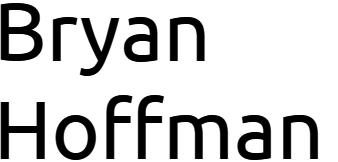I hope to lay out a definition of a good strategy. In order to follow along with my thoughts, we need to be on the same page with respect to a couple terms.
Resources are things like money, time, effort, raw material, and even immaterial things like mood and memories.
Strategies are things that take in resources and output resources, and the engine of change is fueled by… you guessed it , more resources.
It’s just like a recipe. A strategy is like a recipe. We don’t need to figure out how to make bread anymore, but if you want to make bread, it takes resources, one of which is a recipe or a memory of a recipe for making bread. Including this resource saves a lot of time because we don’t have to “reinvent the wheel.”
I believe there’s at least three types of good strategies. I’ll start our discussion by introducing what I’ll refer to as a type II strategy.
A strategy is called good if it creates a surplus. A type II strategy creates surplus by avoiding future costs.
If you take care of your health to avoid future medical problems that are quite costly, you’re engaging in a type II strategy. If you take care of an appliance to get the most use out of it, this too is a type II strategy. In a general sense, these strategies are preventative measures and maintenance. In a more rigid sense, using the terms we’ve discussed, these type II strategies are “good” because they create a surplus in resources. One need only sacrifice a small amount of resources now to avoid larger costs or loss of resources. By anticipating and preventing these costs, a surplus is created.
A type I strategy creates a surplus in a different manner. I’m afraid I’m not going to articulate this well yet, but I’ll try. The surplus comes from the strategy having a certain property. If you put 1 unit of effort into a type I strategy, you get 1 unit of payout. If you put 2 units of effort in, you get more than two units of payout.
If you’re familiar with meal-prepping, this is a type II strategy. Economists might use the term decreasing marginal cost. Entrepreneurs might say scale.
And the one I’m going to do the worst job explaining is a type III strategy… but let’s go! A type III strategy is a meta-strategy. It’s like investing or planning. It creates surplus by optimization and the management of other strategies.
To make it less abstract: meal-prepping is a good strategy, but you wouldn’t spend your whole life meal-prepping. Going for walks is a good strategy because it keeps you healthy, but you wouldn’t go for walks for literally your whole life. A type III strategy balances type I and type II strategies to find the optimum surplus… or at least steer towards it.
Supposed one only increased their payout now. They would get pummeled by future costs. On the other extreme, if one only avoided future costs, they’d run out of resources really quickly. The strategy seeds its own demise. By gaining no resources, once drained, no future costs can be avoided, and yet again our hypothetical agent is pummeled by future costs.
So… what does this all mean? What’s a good strategy after all? I’m really sorry but I’ve got to introduce one last concept. A strategy is like directions in a way. You can go east, you can go north, and if you do both, you’ve gone northeast. A strategy can be composed of sub-strategies in this sense.
A good strategy is one that “continues” to make a surplus. To continue to make a surplus, a strategy must exhibit stability, and for that condition to be meet, it must be composed of type I, type II, and type III strategies.
If you’re with me still, the saying “too much of a good thing can be a bad thing” might make more sense. And, I think this perspective is refreshing. We’re all using our best strategy for life, but all of us are inevitably doing “sub-optimally.” In this dry, machinery and functions perspective, there’s no bad per se, just improvements that haven’t been made yet. The human condition is a bit more forgivable too isn’t it? We’re still learning.
